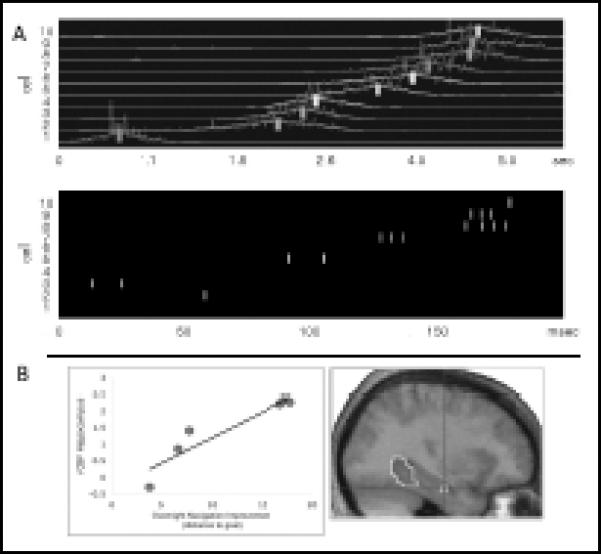Figure 1.

A. In animals, memory reactivation is seen as patterns of cell firings during waking exploration of an environment (Top) that are reiterated in subsequent NREM sleep (Bottom), albeit on a faster time scale. Vertical bars represent the time of peak firing for 10 individual cells demonstrating clear place fields in the training environment [79]. B. In humans, evidence of reactivation has been reported in imaging studies demonstrating that brain regions engaged during task encoding are again active during post-training sleep. In this example, “reactivation” of hippocampal activity during post-training sleep (Right) predicted overnight improvement in memory performance on a spatial learning task (Left). Adapted with permission from Lee AK & Wilson MA. Memory of Sequential Experience in the Hippocampus during Slow Wave Sleep. Neuron 2002; 1183–94 & Peigneux P, Laureys S, Fuchs S, et al. Are spatial memories strengthened in the human hippocampus during slow wave sleep? Neuron 2004; 535–45.
